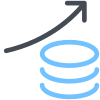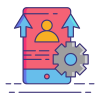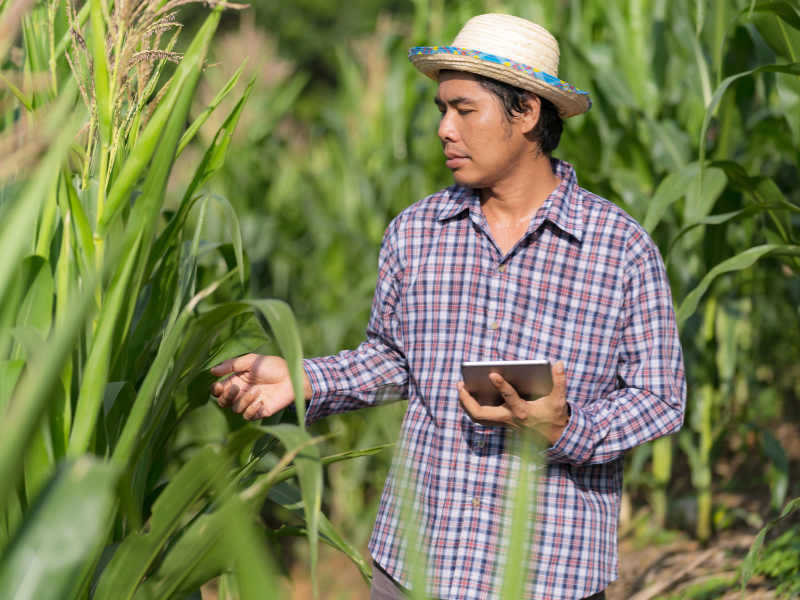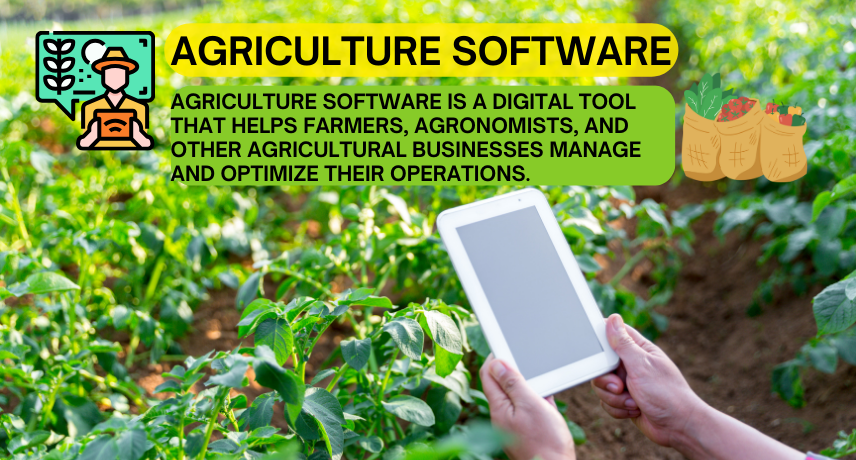Enquiry Form
What is Agriculture Software?
Agriculture Software is a specialized tool designed to assist farmers, agribusinesses, and agricultural organizations in managing and optimizing their operations. From crop management and livestock monitoring to supply chain coordination and financial tracking, this software streamlines agricultural processes, enhances productivity, and promotes sustainability.
What are the Best Features of Agriculture Software?
Here are 15 essential features of Agriculture Software that support modern farming practices:

Crop Management
Monitor crop health, yield, and growth stages.

Livestock Tracking
Track animal health, breeding cycles, and productivity.

Weather Forecasting
Access real-time weather updates for informed decision-making.

Pest and Disease Monitoring
Identify and address threats to crops and livestock.

Soil Analysis
Evaluate soil conditions to determine optimal planting strategies.

Irrigation Management
Optimize water usage with precision irrigation tools.

Financial Management
Manage budgets, expenses, and revenues efficiently.

Farm Mapping
Create detailed maps of fields and resources using GPS.

Supply Chain Integration
Coordinate logistics for inputs and outputs.

Harvest Tracking
Record and analyze harvest data for better planning.

Market Insights
Access market trends and pricing information.

Labor Management
Schedule and monitor workforce activities.

Sustainability Metrics
Track carbon footprints and implement eco-friendly practices.

Mobile Accessibility
Manage operations on the go with mobile apps.

Customizable Dashboards
Visualize key metrics tailored to specific farming needs.
Benefits of Agriculture Software
Here are eight key benefits of implementing Agriculture Software:
- Increased Productivity: Streamline operations to maximize crop and livestock yields.
- Resource Optimization: Use resources like water, fertilizer, and labor more efficiently.
- Enhanced Decision-Making: Leverage data-driven insights for better farming strategies.
- Cost Savings: Reduce operational costs by automating and optimizing processes.
- Improved Sustainability: Adopt eco-friendly practices to promote long-term viability.
- Risk Mitigation: Address risks related to weather, pests, and diseases proactively.
- Regulatory Compliance: Ensure adherence to agricultural laws and standards.
- Scalability: Expand operations seamlessly as your agricultural enterprise grows.
Which Businesses Need Agriculture Software?
Agriculture Software is essential for various stakeholders in the agricultural sector. Here’s how it caters to different businesses:

- Crop Monitoring: Track crop growth, health, and yield predictions.
- Precision Agriculture: Optimize planting and irrigation using real-time data.
- Resource Allocation: Manage labor, water, and fertilizers effectively.
- Pest Control: Identify and mitigate pest infestations promptly.
- Market Access: Get insights into pricing trends and distribution options.

- Supply Chain Coordination: Streamline logistics for inputs and outputs.
- Inventory Management: Monitor and manage stock levels of seeds, fertilizers, and tools.
- Financial Tracking: Maintain detailed records of revenues and expenses.
- Customer Insights: Analyze buying patterns to tailor offerings.
- Sustainability Goals: Track and reduce environmental impacts.

- Member Management: Coordinate activities and contributions of cooperative members.
- Resource Sharing: Allocate shared equipment and facilities efficiently.
- Data Aggregation: Collect and analyze data from multiple farms.
- Training Tools: Provide educational resources for members.
- Market Access: Negotiate better deals for members with bulk outputs.

- Policy Planning: Use agricultural data for policy formulation.
- Subsidy Distribution: Manage and monitor subsidies effectively.
- Farmer Outreach: Disseminate information on best practices and resources.
- Disaster Response: Address weather-related crises with real-time data.
- Sustainability Initiatives: Promote eco-friendly farming practices.

- Data Collection: Gather field data for agricultural studies.
- Experiment Tracking: Monitor trials on crop varieties or farming techniques.
- Collaboration Tools: Work with farmers and agribusinesses on innovations.
- Trend Analysis: Identify emerging challenges and opportunities.
- Publication Support: Use data visualization tools for research dissemination.
How Agriculture Software Works

- Setup and Integration: Configure the software to align with specific agricultural needs.
- Data Input: Enter information on crops, livestock, resources, and financials.
- Monitoring: Track metrics like weather, soil conditions, and crop health.
- Automation: Schedule tasks like irrigation, fertilization, and pest control.
- Analysis: Use dashboards and reports to gain insights and optimize operations.
- Decision Support: Leverage data to plan planting, harvesting, and resource allocation.
